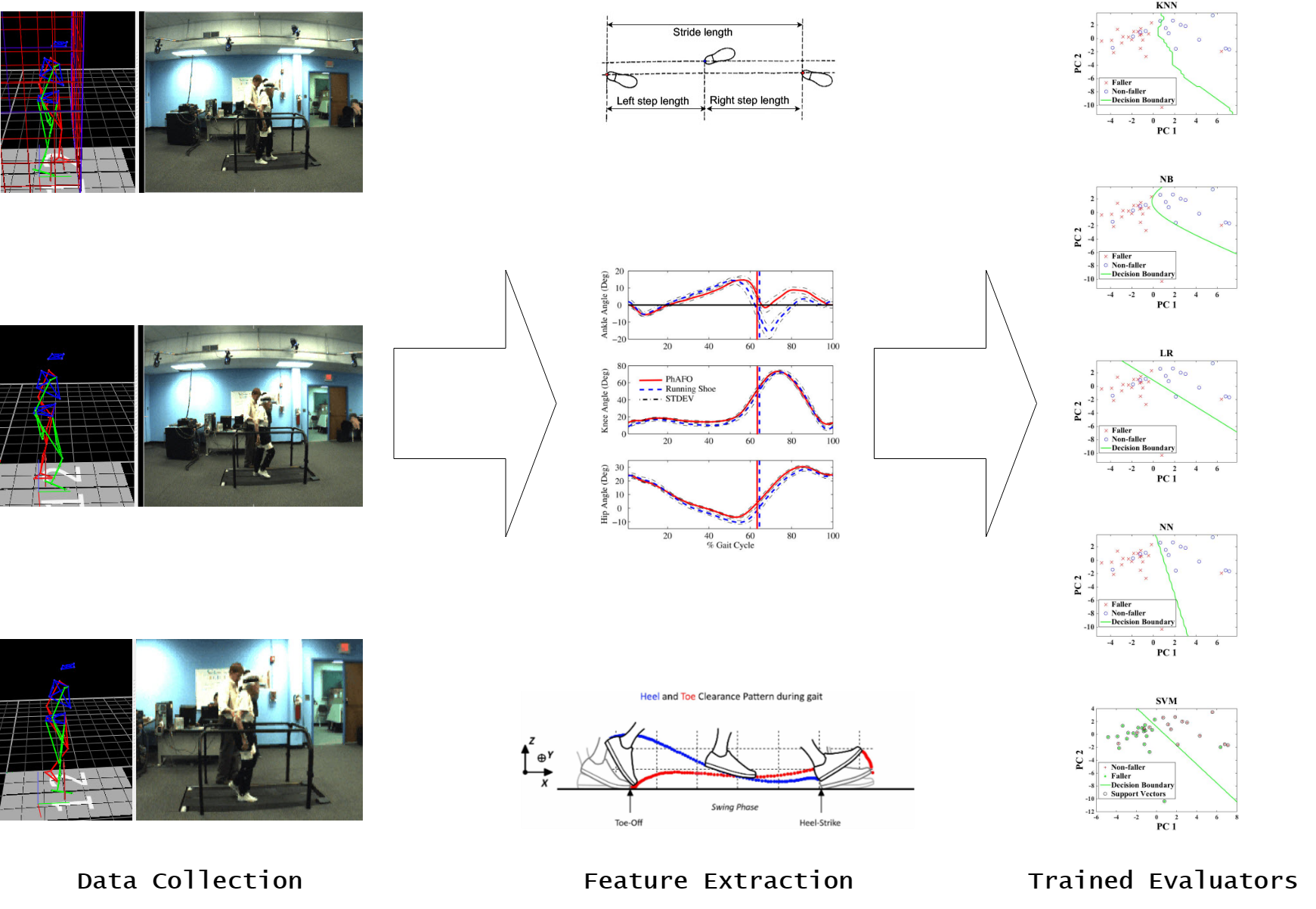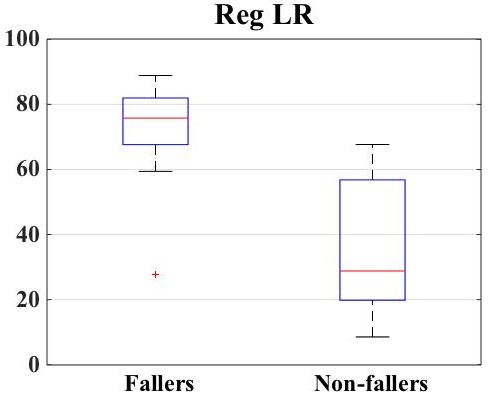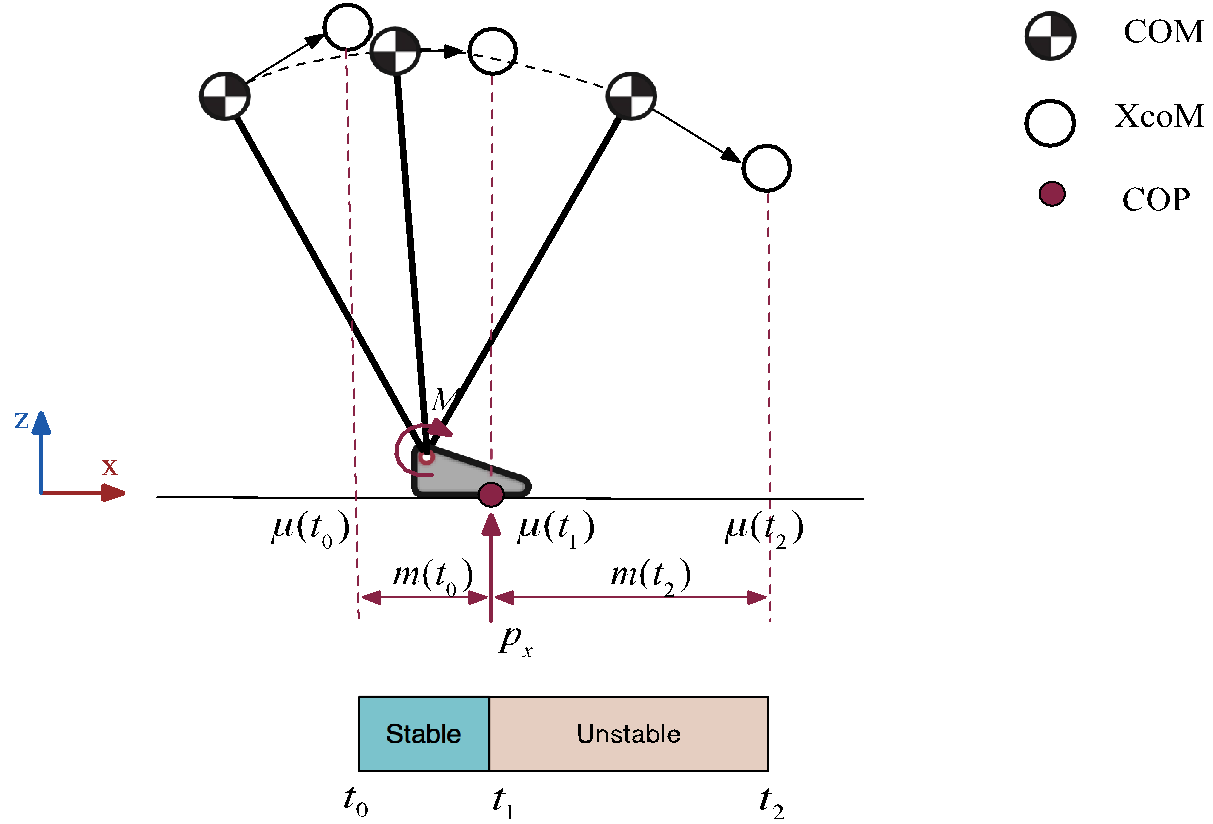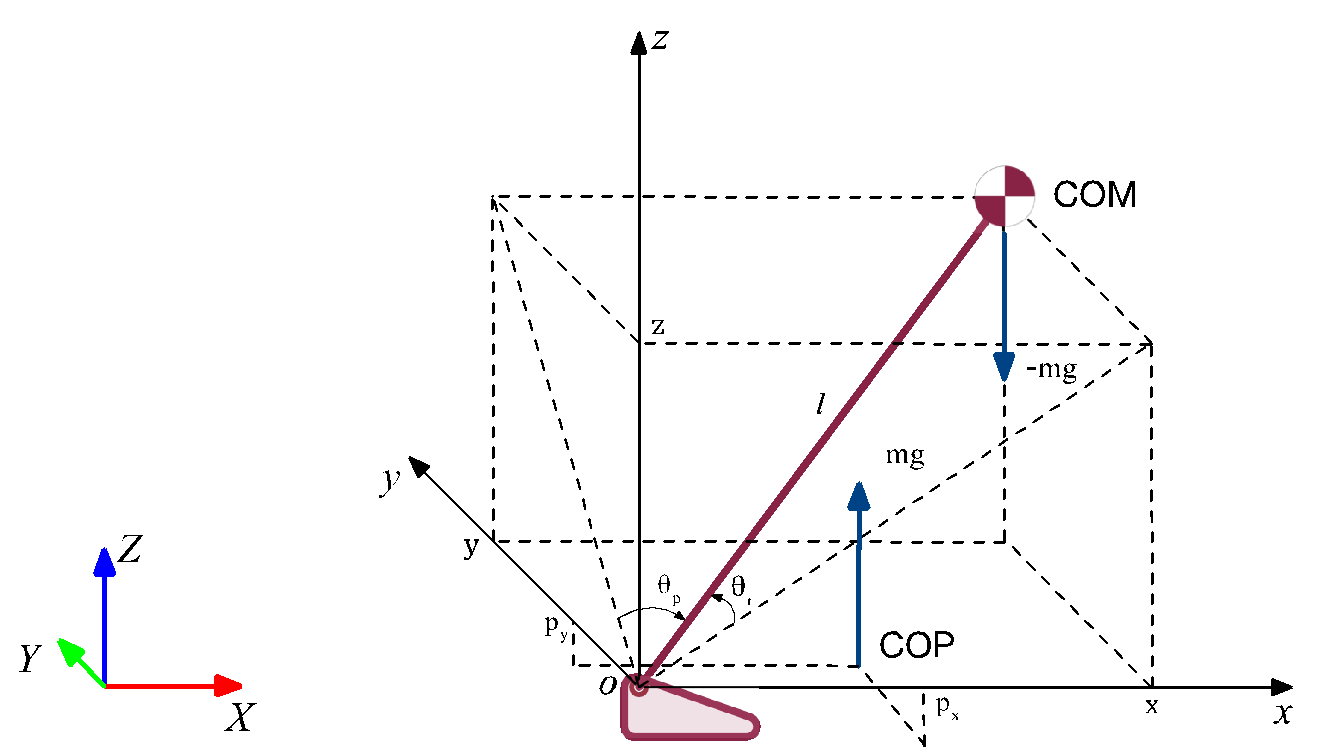Risk of Falling Assessment for Older Adults
- Motivation: Improve life quality for older adults.
- Objectives: Extract fall risk indices; quantitatively analyse risk of falling.
- Method: Gait analysis; biomechanics modeling; machine learning.
- Contributions: Proposed novel fall risk assessment indices; established machine learning framework for fall risk assessment.


Publications
- Zhang L, Ma O, Wood R. A Pilot Study of Dynamic Stability Indices for Potential Application of Identifying Older Adult Fallers. InDynamic Systems and Control Conference 2012 Oct 17 (Vol. 45301, pp. 1-9). American Society of Mechanical Engineers.
- Zhang L, Ma O, Fabre JM, Wood RH, Garcia SU, Ivey KM, McCann ED. Classification of older adults with/without a fall history using machine learning methods. In2015 37th Annual International Conference of the IEEE Engineering in Medicine and Biology Society (EMBC) 2015 Aug 25 (pp. 6760-6763). IEEE.
- Zhang L, Ma O, Fabre JM, Wood RH. The Motion of Center of Mass: Walking Reveals Difference in Older Adults With and Without Fall History. The International Journal of Aging and Society, Vol.5, No.3, 2015.



